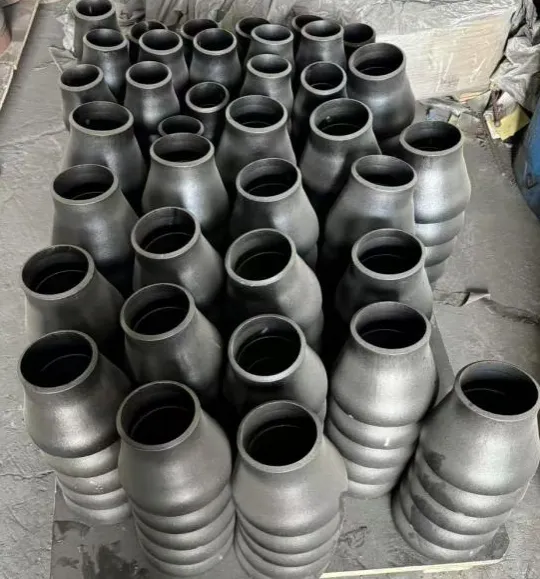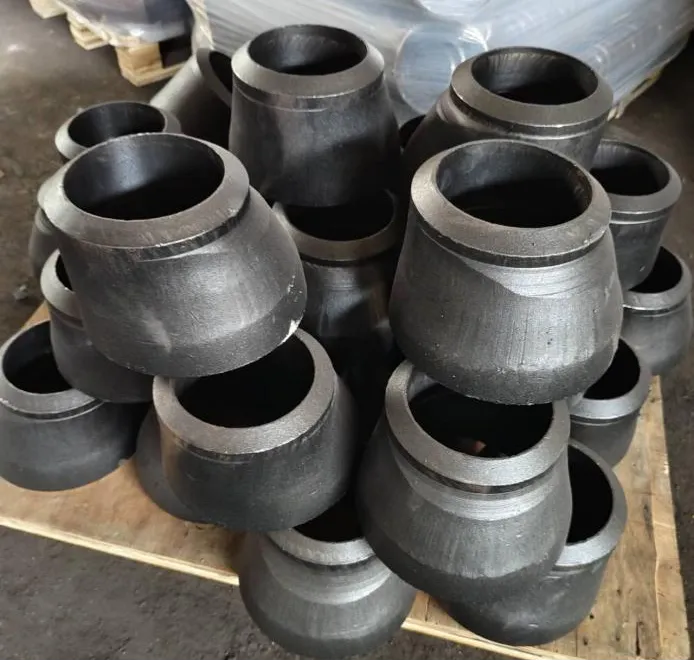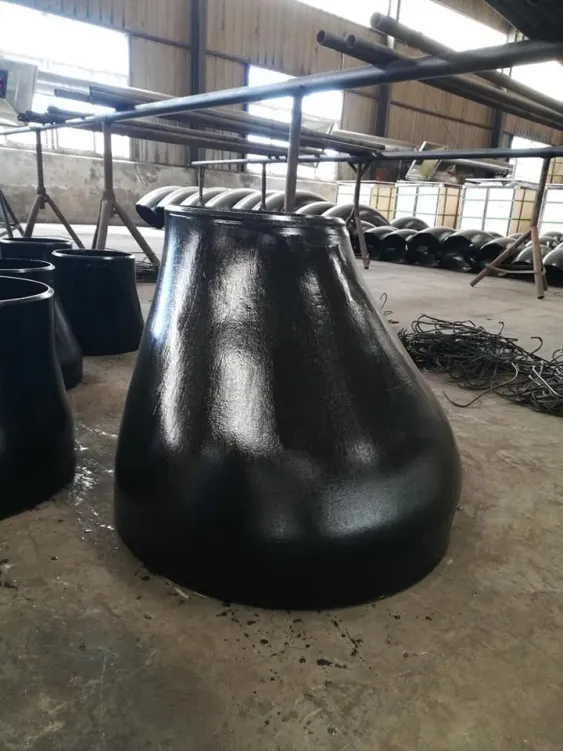-
Cangzhou Yulong Steel Co., Ltd.
-
Phone:
+86 13303177267 -
Email:
admin@ylsteelfittings.com
- English
- Arabic
- Italian
- Spanish
- Portuguese
- German
- kazakh
- Persian
- Greek
- French
- Russian
- Polish
- Thai
- Indonesian
- Vietnamese
- Zulu
- Korean
- Uzbek
- Hindi
- Serbian
- Malay
- Ukrainian
- Gujarati
- Haitian Creole
- hausa
- hawaiian
- Hebrew
- Miao
- Hungarian
- Icelandic
- igbo
- irish
- Japanese
- Javanese
- Kannada
- Khmer
- Rwandese
- Afrikaans
- Albanian
- Amharic
- Armenian
- Azerbaijani
- Basque
- Belarusian
- Bengali
- Bosnian
- Bulgarian
- Catalan
- Cebuano
- China
- China (Taiwan)
- Corsican
- Croatian
- Czech
- Danish
- Esperanto
- Estonian
- Finnish
- Frisian
- Galician
- Georgian
- Kurdish
- Kyrgyz
- Lao
- Latin
- Latvian
- Lithuanian
- Luxembourgish
- Macedonian
- Malgashi
- Malayalam
- Maltese
- Maori
- Marathi
- Mongolian
- Myanmar
- Nepali
- Norwegian
- Norwegian
- Occitan
- Pashto
- Dutch
- Punjabi
- Romanian
- Samoan
- Scottish Gaelic
- Sesotho
- Shona
- Sindhi
- Sinhala
- Slovak
- Slovenian
- Somali
- Sundanese
- Swahili
- Swedish
- Tagalog
- Tajik
- Tamil
- Tatar
- Telugu
- Turkish
- Turkmen
- Urdu
- Uighur
- Welsh
- Bantu
- Yiddish
- Yoruba

Jan . 17, 2025 16:50 Back to list
The Role of Butt Weld Reducers in Piping Systems
Butt weld reducers play a crucial role in the construction and operation of piping systems across various industries, including oil and gas, power generation, chemical processing, and water treatment. These components facilitate the smooth transition between pipes of different diameters, ensuring efficient flow control, minimizing turbulence, and preventing system failures. In this article, we will explore the essential functions and advantages of butt weld reducers, the materials used in their manufacture, and best practices for installation and maintenance.

What Are Butt Weld Reducers?
Butt weld reducers are pipe fittings designed to connect two pipes of different diameters. Their primary function is to reduce or increase the size of a pipeline in a controlled and seamless manner. As the name suggests, butt welding is used to attach the reducer to the pipes, ensuring a smooth, robust, and leak-free connection. The transition can either be concentric or eccentric, depending on the type of flow and system requirements.
Key Functions of Butt Weld Reducers in Piping Systems
The primary role of butt weld concentric reducer is to manage the flow of fluids within piping systems by accommodating changes in pipe size. This is especially critical in systems where the pressure, temperature, and flow rates vary. Butt weld reducers help maintain system integrity by:
Maintaining Flow Efficiency: Butt weld reducers allow for a smooth transition between pipe sizes, which helps to avoid turbulence and pressure drop. This efficiency is essential in systems handling gases, liquids, or slurries at high velocity.
Minimizing Energy Loss: A proper fit between pipes reduces the chances of fluid friction and minimizes energy loss in the system. This is particularly important in industries such as power generation, where energy efficiency is a key concern.
Improving System Flexibility: With the ability to reduce or increase pipe sizes, butt weld reducers offer flexibility in design. This makes it easier to integrate piping systems of various specifications into a single network, which is often required in complex industrial applications.
Ensuring Leak-Free Connections: The butt welding process creates a strong bond between pipes and reducers, ensuring leak-free connections even under high pressure. This is particularly important in high-stakes industries like oil and gas, where leaks can be costly and hazardous.

Materials Used for Butt Weld Reducers
Butt weld pipe reducer are made from a variety of materials to meet the specific needs of the application. Common materials include:
Carbon Steel: Ideal for standard applications, carbon steel butt weld reducers are strong, durable, and cost-effective. They are suitable for low to medium-pressure systems, especially in industries like water treatment and HVAC.
Stainless Steel: Stainless steel reducers are commonly used in systems that handle corrosive materials or operate in high-temperature environments. These reducers offer superior corrosion resistance and durability, making them essential in chemical processing and food industries.
Alloys: Special alloys such as Inconel, Hastelloy, and Monel are used in extreme conditions, including high temperatures and highly corrosive fluids. These materials offer excellent resistance to both corrosion and heat, making them ideal for oil and gas and aerospace industries.
The choice of material depends on factors such as the fluid type, operating temperature, pressure, and environmental conditions, ensuring that the piping system remains safe, reliable, and efficient.

Types of Butt Weld Reducers: Concentric vs. Eccentric
Butt weld reducers come in two main types: concentric and eccentric. The choice between these types depends on the specific application and the type of flow within the system.
Concentric Reducers: In concentric reducers, both the larger and smaller ends are centered along the same axis. These reducers are typically used in systems where the fluid flow is not sensitive to slight changes in elevation. They are often used in vertical pipelines where the flow is expected to be uniform.
Eccentric Reducers: In eccentric reducers, the larger and smaller pipe ends are offset to maintain a constant flow path. These reducers are ideal for horizontal piping systems where it is essential to maintain the bottom of the pipe level. They are particularly useful in systems that transport slurries, as they help to avoid air pockets that may form in concentric reducers.
Advantages of Using Butt Weld Reducers
Butt weld reducers provide several key benefits that enhance the performance and reliability of piping systems:
Durability and Strength: The welding process ensures that the connection is as strong as the pipe itself, making butt weld reducers highly durable. This robust connection minimizes the risk of failure under high-pressure and high-stress conditions.
Leak Prevention: Since the weld creates a continuous bond between the reducer and the pipe, there are fewer opportunities for leaks compared to threaded or flanged connections. This ensures the system operates efficiently without the risk of hazardous leaks.
Space Efficiency: Butt weld reducers provide a compact, seamless transition between pipe sizes, which is especially useful in tight spaces or when designing systems with limited room for bulky fittings.
Cost-Effectiveness: While butt weld reducers can be more expensive upfront than other types of fittings, their long-term benefits make them a cost-effective solution. They require less maintenance and offer better durability, leading to lower operational costs over time.
Latest news
-
ANSI 150P SS304 SO FLANGE
NewsFeb.14,2025
-
ASTM A333GR6 STEEL PIPE
NewsJan.20,2025
-
ANSI B16.5 WELDING NECK FLANGE
NewsJan.15,2026
-
ANSI B16.5 SLIP-ON FLANGE
NewsApr.19,2024
-
SABS 1123 FLANGE
NewsJan.15,2025
-
DIN86044 PLATE FLANGE
NewsApr.19,2024
-
DIN2527 BLIND FLANGE
NewsApr.12,2024
-
JIS B2311 Butt-Welding Fittings LR/SR 45°/90° /180°Seamless/Weld
NewsApr.23,2024











